2022 Intense Tracer 279
Wheel Size: 29” front, 27.5” rear (full 29er option available)
Travel: 170 mm rear / 170 mm front
Frame Material: Carbon fiber
Price: Complete bikes $5,499-$7,199
Size Tested: Large
Blister’s Measured Weight: 34.6 lbs (“Expert” Build, size Large)

Intro
The Tracer has been a part of Intense’s lineup for over two decades. As the sport and the bikes we enjoy it on have drastically changed over that period, so has the Tracer. While it started as a longer-travel XC bike, it now stands as a modern Enduro bike. That evolution involved a lot of significant updates, and this most recent update is a noteworthy one.
The new Tracer 279 was first teased in the summer of 2021 and was officially released in April of this year. The Tracer 279 has undergone some pretty notable changes which we will get into below — including a new mixed-wheel-specific configuration.
[Editor’s Note: since publishing our initial First Look, Intense has released a full 29er version of the Tracer, the Tracer 29. We’re focusing on the Tracer 279 here.]
The Frame
The Tracer 279 is only available in carbon fiber, and it has 170 mm of rear suspension travel (up from 165 mm) paired with a 170 mm fork up front. While the previous version of the Tracer had 27.5” wheels front and back, the Tracer 279 is designed around a mixed-wheel platform and is only available as such.
Mixed-wheel bikes (either dedicated setups or with the option to run either a 27.5’’ or 29’’ rear wheel with a 29er up front) have become somewhat common of late. However, it’s less common for a company to offer their Enduro race bike with a dedicated mixed-wheel setup as Intense has done with the Tracer.
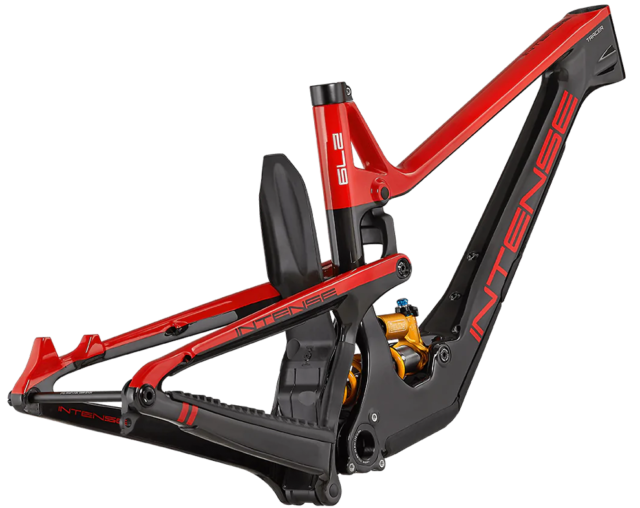
Also new for the latest version of the Tracer 279 is its rear shock placement. Intense uses a variant of a VPP suspension layout that they call “JS Tuned,” and with the Tracer 279, they’ve moved the rear shock to the lower linkage of the bike’s rear suspension, whereas it was previously mounted to the upper link. The layout is fairly similar to what Santa Cruz has done with their bikes in recent years, with a pair of counter-rotating links and the shock nestled low in the front triangle.
The Tracer 279 also has fully guided internal cable routing, a shuttle guard on the downtube, and molded frame protection in several other places on the bike. It uses a threaded bottom bracket, and it also has in-frame storage accessed on the underside of the down tube, near the bottom bracket. Additionally, the Tracer utilizes a flip-chip to offer two geometry settings — more on that below. There’s room for a water bottle inside the front triangle, too.

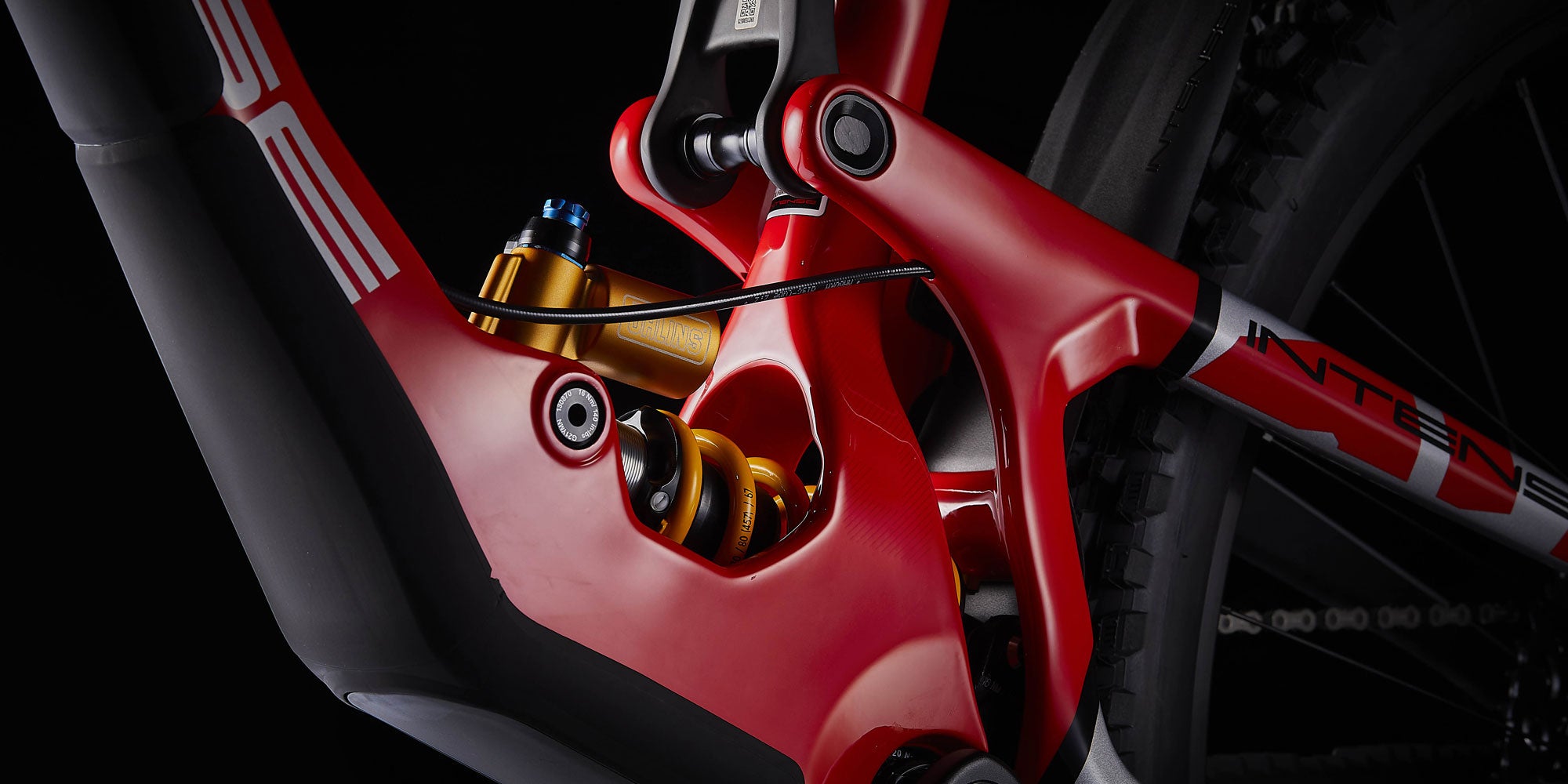

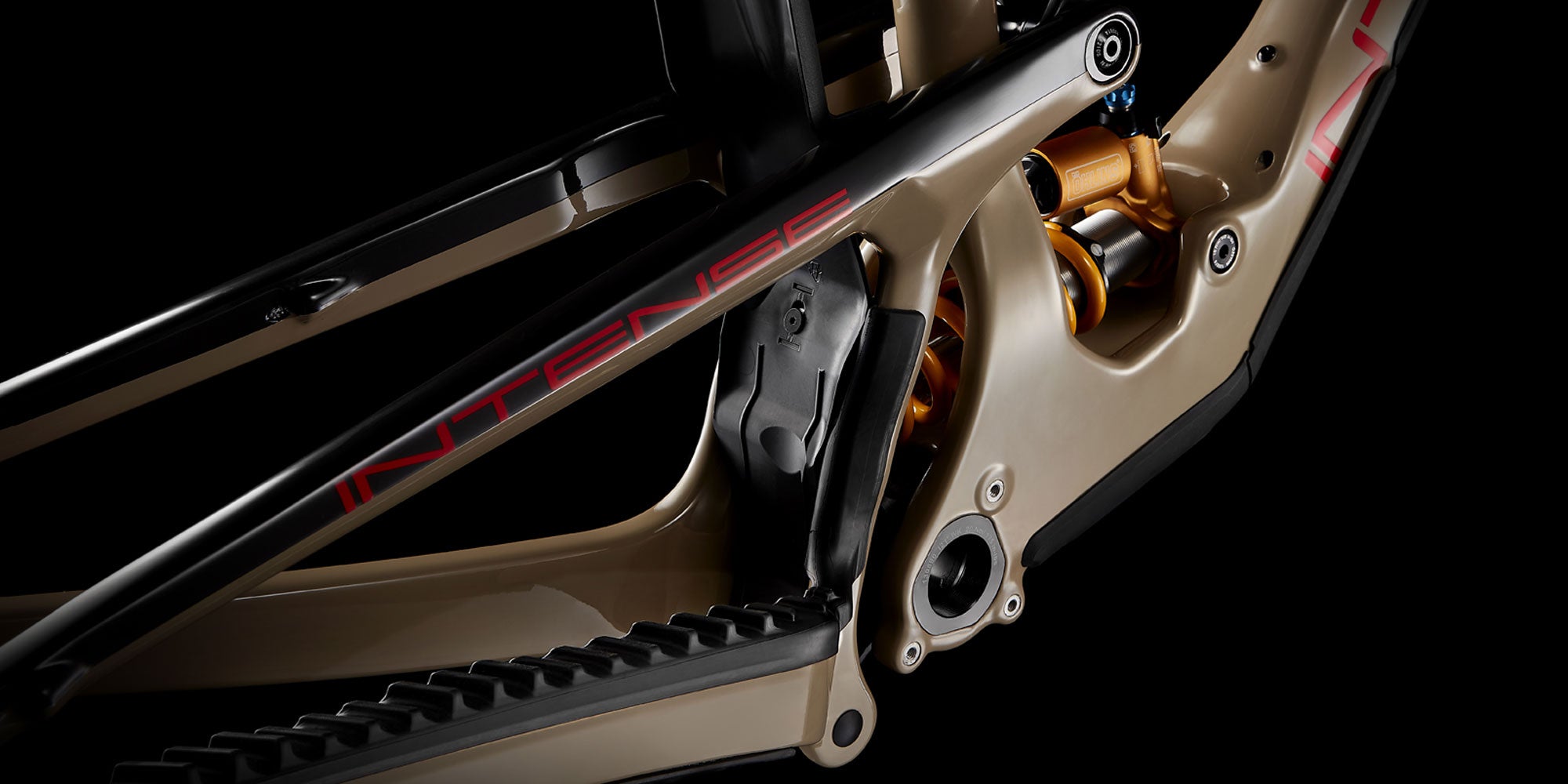
Fit & Geometry
As you’d expect from just about any mountain bike update these days, the Tracer 279 received longer and slacker geometry, paired with a steeper seat tube. Looking at the Tracer’s geometry chart, nothing pops out as being out of place, and everything looks cohesive — which is great, since the previous Tracer was starting to look quite dated by today’s standards. You can see the full geometry charts below:


The Tracer 279 is available in four sizes, Small through Extra Large. In the High geometry setting, its reach starts at 425 mm for the size Small, then 455 mm for the Medium, 480 mm for the Large, and 505 mm for the Extra Large. Its head tube angle is 64.5º and its seat tube angle is 77.9º in every size. Stack height starts at 615 mm on the size Small then grows by 9 mm for each larger size.
Switching the Tracer over to the “Low” geometry setting slackens the bike out by half a degree, lowers the bottom bracket by 7 mm, and shortens the reach by 5 mm in each size. It’s worth noting that each size shares the same 437 mm chainstays (rather than different lengths for each size), but apart from that, the Tracer has thoroughly modern geometry you’d expect to see on an Enduro bike today.
The Builds
Intense has kept things quite simple with the Tracer 279’s build kits by offering just two: “Expert” and “S.” Neither build kit is entry-level; rather, both offer a moderate to somewhat high-end mix of components. Both kits come with a coil shock, and Intense sells a Tracer 279 frame with an Öhlins TTX22M coil shock for $3,299.

For reference, the complete build options are as follows:
- Fork: Fox 38 Float Performance
- Shock: Fox DHX2 Performance Elite
- Drivetrain: SRAM NX Eagle
- Wheels: e*Thirteen LG1 Enduro 30 mm Alloy / Intense Alloy Hubs
- Brakes: SRAM Code R, 200 mm Centerline rotors
- Dropper: Intense Recon
- Fork: Öhlins RXF 38 m.2
- Shock: Öhlins TTX22M Coil
- Drivetrain: SRAM GX/X01 Eagle
- Wheels: e*Thirteen LG1 Enduro 30 mm Alloy / e*Thirteen Race Hubs
- Brakes: Magura MT7 Pro, 203 mm Storm HC rotors
- Dropper: e*Thirteen Infinite
The Tracer 279 Expert features a Maxxis Minion DHF 2.5” tire up front and a Maxxis Minion DHR II 2.4” tire out back, both with MaxxTerra rubber compounds and Exo+ tire casings. The Tracer S 279 has the Maxxis Assegai 2.5” tire front and rear, both in the MaxxGrip rubber compound and burlier DH casing.
Some Questions / Things We’re Curious About
(1) Most mixed-wheel mountain bikes on the market tend to feel a little more nimble and playful than otherwise similar 29ers, so exactly how game-on will the Tracer 279 feel?
(2) Given this, is the Tracer more versatile than most Enduro race bikes, or is it still a specialized racing tool?
(3) And how does the Tracer stack up against a whole bunch of the other Enduro bikes we’ve been on recently, including the V2 Santa Cruz Megatower?
Flash Review
Blister Members can read our Flash Review of the new Tracer 279 for our initial on-trail impressions. Become a Blister Member now to check out this and all of our Flash Reviews, plus get exclusive deals and discounts on gear, and personalized gear recommendations from us.
Bottom Line (For Now)
Intense’s most recent take on an Enduro race bike is certainly an interesting one. The Tracer 279 combines modern geometry, a mixed-wheel setup, and 170 mm of coil-sprung suspension into a package that looks to be competitive with the ever-growing market of Enduro bikes. We’ve been spending some time on it and will continue to flesh out what makes the Tracer stand out in its class, so let us know of any questions you have about this bike below, and stay tuned for our Full Review.
FULL REVIEW
Intro
After spending lots of time this summer aboard the Intense Tracer 279, we have come away with some interesting findings regarding Intense’s dedicated mixed-wheel Enduro bike.
Fit and Sizing
Dylan Wood (5’10”, 158 lbs / 179 cm, 72 kg): I’ve historically found myself most comfortable on size Large mountain bikes, and the Intense Tracer 279 was no exception. The 480 mm reach is on the slightly longer end of what I’ve spent most of my time on, but I never found myself feeling too stretched out (nor too cramped) on this bike.
After adjusting this bike’s cockpit, seat height, and saddle position to my preferences, it immediately felt comfortable and provided a familiar fit. Having spent a bunch of time on modern Enduro bikes (most of which have also been size Larges), there isn’t really anything about the Tracer 279’s fit that threw me off or surprised me. So it didn’t take long at all for me to feel confident and ready to tackle some of the Gunnison Valley’s most demanding trails on the Tracer.
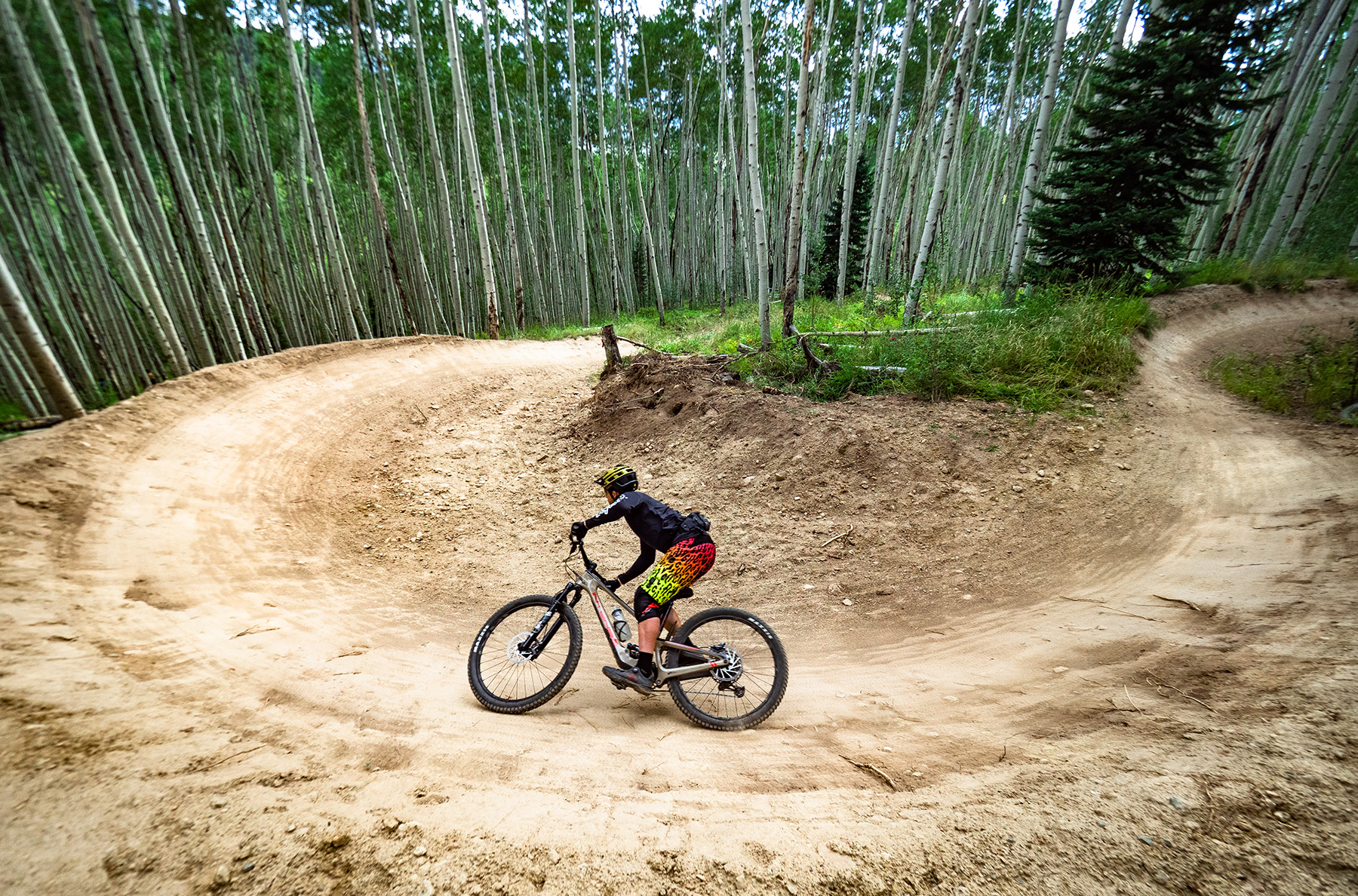
Eric Freson: (5’10”, 165 lbs / 178 cm, 74.8 kg): Similar to Dylan, the fit of the size Large Tracer 279 was easy for me to get along with. The 480 mm reach felt surprisingly comfortable, thanks in large part to a noticeably steep ~78º seat tube angle which kept the seated body position more compact than I had expected on a bike with a reach number this long. It’s worth noting that, at my height and inseam (~30 in / 76 cm), I only had about ~1 cm of seatpost extension above the seatpost collar with the stock 170 mm Intense dropper.
Climbing
Dylan: The familiar and intuitive fit of the Tracer continued for me on the way up. When seated and pedaling, I really appreciated its relatively steep 77.9º effective seat tube angle. I could stay seated on basically everything but the steepest of trails and still maintain a good balance of front and rear wheel traction. Despite having a somewhat slack 64º head tube angle, I was just about always able to keep enough weight over the front end of this bike to prevent any front wheel wandering. It did take a bit more of a concerted effort to do this on very steep slogs, but I’ve found this to be the case on every Enduro bike I’ve been on recently.
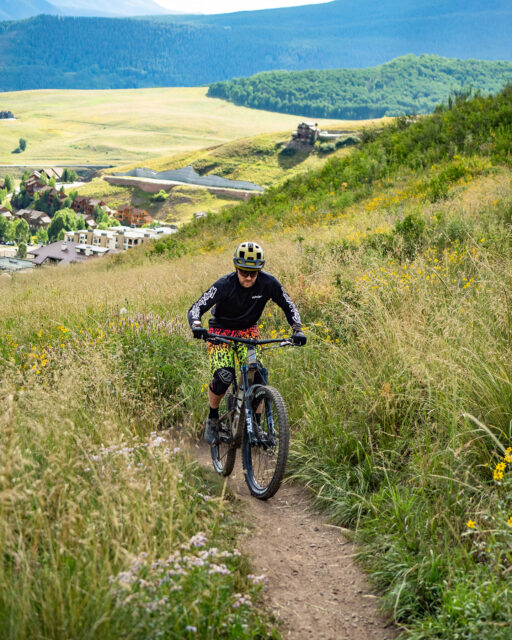
The Tracer isn’t the most efficient or sprightly Enduro bike I’ve been on, but I don’t think this is a bad thing. The Tracer 279’s rear-wheel traction under power is excellent and allows the back end to stay glued to the trail over tricky, loose, and technical bits of trail. This bike isn’t one that encourages me to stand up and attack the climbs, but it doesn’t feel like a total slug when you do, either. Rather, I found it best to stay seated during climbs, hit the climb switch on the Fox DHX2 rear shock, and find a nice rhythm to maintain over the course of a climb.
The Tracer is an intuitive, normal-feeling bike first and foremost, but its mixed-wheel setup does create some different characteristics from a full 29” Enduro bike. First of all, despite its steep seat tube angle, the Tracer does bias the rider’s weight slightly more rearward. I’m guessing that this contributes to this bike’s excellent rear-wheel traction when climbing, but it does require that you pay a bit more attention to staying forward on the bike on steeper climbs, compared to a full 29er with similar geometry (the Santa Cruz Megatower comes to mind). The rear wheel does feel like it gets hung up every so slightly more on small bumps, particularly square-edged ones, but the difference isn’t dramatic. Traditional wisdom also says that 27.5” wheels are a bit easier to accelerate, which makes sense given their lower weight, but I really didn’t notice much of this, either.
Eric: My opinion hasn’t changed a ton from the Flash Review we posted when we first got the Tracer 279, and I think Dylan also captured it well. When climbing, the Tracer 279 is efficient in the macro lens, for sure, but perhaps didn’t wow me quite as much as Intense would have led me to believe. To me, it falls right in line with other ~170mm-travel Enduro race machines. I used the term “race” initially as a way to identify that this is an Enduro bike that, to me, prioritizes sensitivity and traction over efficiency. All bikes land somewhere on this spectrum; I tend to think of race-oriented Enduro bikes as being most focused on grip. The flip side is that it does feel like it was stealing a few of my watts when climbing.
If I sat and spun, the Tracer 279 would happily tractor to the top of just about anything with excellent traction. Standing and attacking, even with the climb switch of the DHX2 engaged, felt a bit draining. The increased sensitivity of the rear suspension just felt like it required a bit more energy at the pedals before my inputs were put to the ground in the form of forward motion.
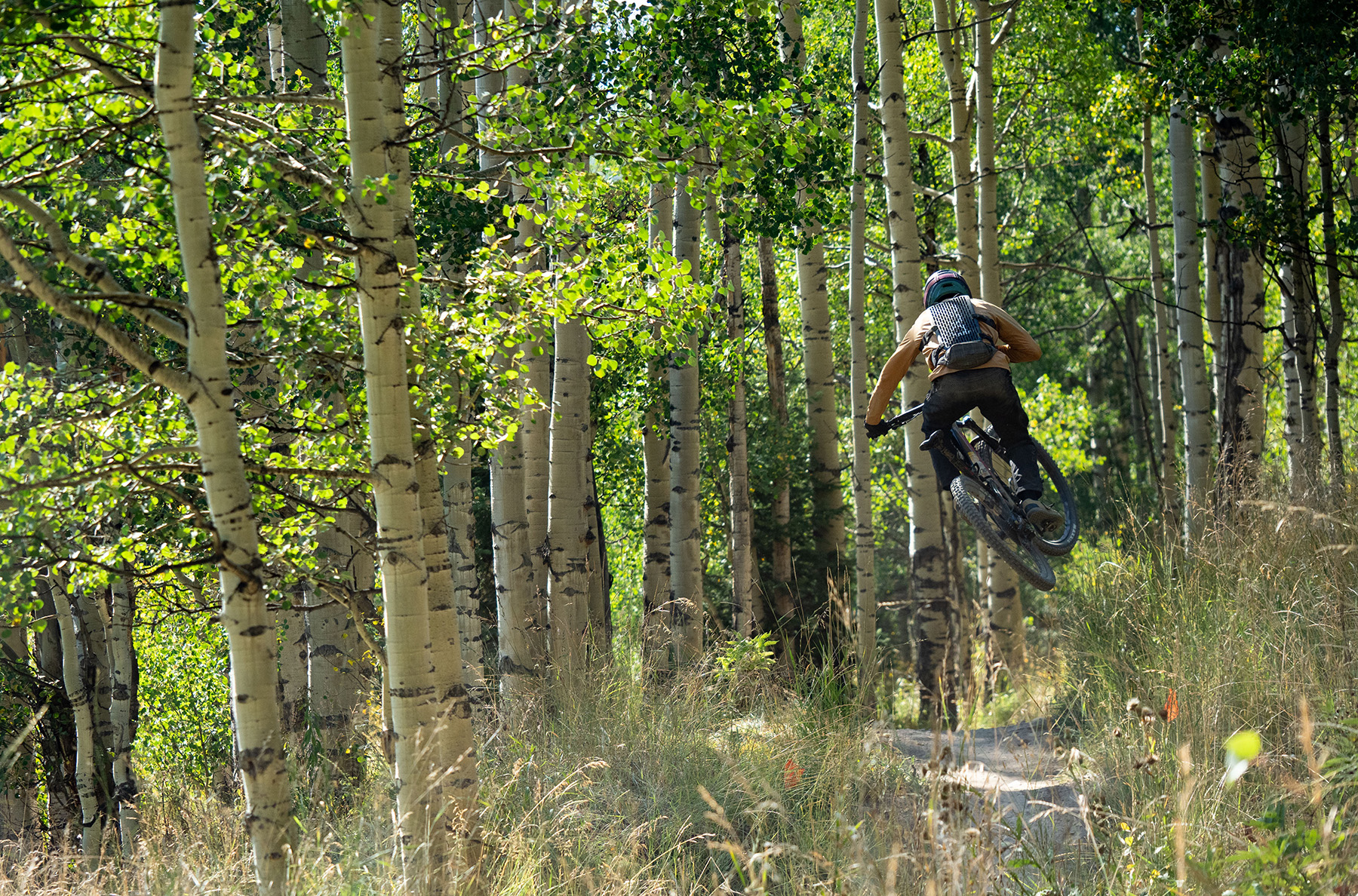
Descending
Dylan: Like most Enduro bikes, the Tracer feels most at home when it’s pointed downhill and going fast. At first, I was struggling to get forward enough on this bike to both properly weight the front tire and put my body weight in a good spot to get a balanced, intuitive feel out of the bike. Fortunately, after I let some air out of the fork (which I initially set up at the recommended settings for my weight, about 90 PSI), dropping it down to about 80 PSI, I felt as if my weight was sitting in a much more optimal place, and I was starting to really enjoy the Tracer 279.
One of the first things I noticed is how planted and calm this bike feels over rough sections of trail. It offers excellent small-bump sensitivity and provides tons of traction and a smooth ride over chattery, rough sections. At the same time, I also thought it offered great mid-stroke support, which was most apparent on tricky off-camber, rooty sections, where I enjoyed how much control and confidence the bike provided. On larger hits, the Tracer also does a great job of smoothing things out without totally blowing through its travel (especially with a 500 lb coil spring — more on that later). While its suspension doesn’t feel super lively and playful, this seems like a fair tradeoff since the Tracer provides impressive levels of traction and composure on even the roughest and fastest trails I typically ride.
I also found the Tracer 279’s handling very calm and predictable at speed. It never felt twitchy, and its somewhat long 480 mm reach created a relatively large sweet spot, providing intuitive steering and cornering without needing to worry about staying in a very specific spot fore-aft between the wheels. Speaking of cornering, this might be one of the places where the Tracer 279 stood out to me the most. Overall, I’d say it offers awesome cornering prowess and stands out compared to full 29er Enduro bikes in this regard. Specifically, I was most impressed with how well it handled quicker, tighter corners. It was easy to tip over into abrupt bends in the trail, and when it was time to stop cornering, I appreciated how easy it was to get it back upright and pointed right where I wanted. While I’d be hesitant to call this a nimble bike, it certainly felt more maneuverable than I expected in corners, especially for this class.
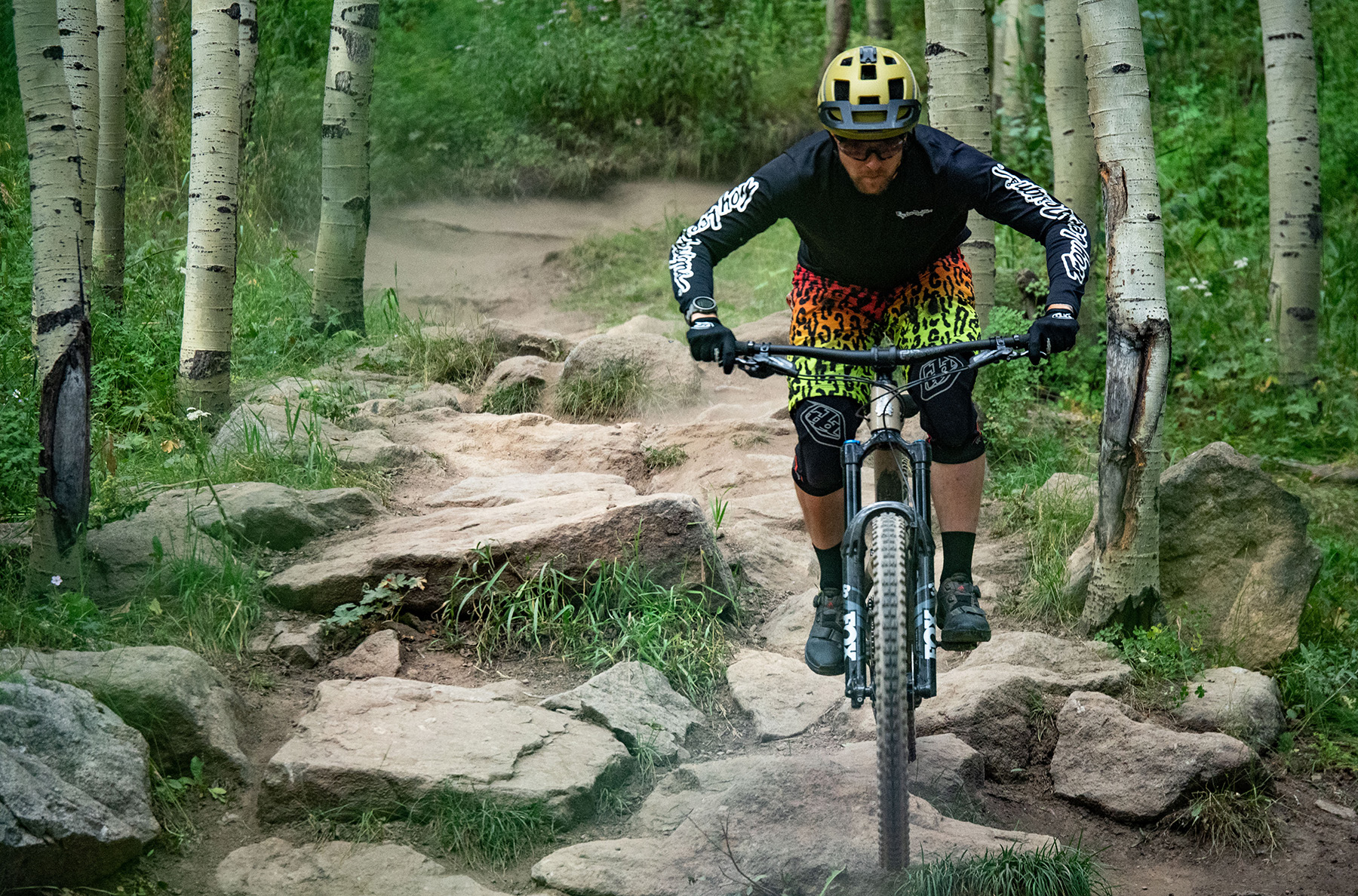
As I mentioned earlier, the Tracer feels as if it biases your weight slightly more rearward than most Enduro bikes. I found that this allowed me to ride very steep trails with a slightly more casual and upright position than most 29ers I’ve been on; I never felt like I needed to get very far back to keep a good balance of front- and rear-wheel traction. This was especially helpful on ultra-steep trails, and while I usually don’t struggle with not being able to get back far enough on my bike, I definitely didn’t have any issues with that on the Tracer. On flatter trails, though, I felt as if I needed to get a little more forward and over the bars of the Tracer 279 to maintain a good balance and not feel like I was riding over the rear wheel.
This bike definitely felt most at home in steep, technical, and rough terrain; the Tracer 279 definitely sacrifices some liveliness for a more planted, calm ride. On mellower, flatter trails, the Tracer feels like too much bike, at least for my tastes. It doesn’t produce much speed when pumped over rollers and through corners, and it isn’t very quick to accelerate when you’re on the pedals. There are more versatile Enduro bikes out there (the Revel Rail 29 comes to mind), but I don’t think that’s a bad thing, given how capable the Tracer is on fast, chunky trails.
Eric: Once pointed down, the design choices behind Tracer were apparent. I did notice its low center of gravity, as well as the 27.5’’ wheel on the rear of the bike (both selling points from Intense). The Fox 38 fork, stiff chassis, low COG, and progressive suspension had me feeling very confident chucking the bike into challenging sections of trail. Traction was abundant and compression was nicely controlled. The easiest way for me to describe the sensation of the mullet setup was a feeling of easily being “centered” on the bike. It was easy to ride boldly or powerfully on the Tracer with the freedom of body movement and positioning it afforded me as a rider.

Like Dylan, I also wound up running the fork a bit softer than Fox’s guide and found this to be a good match for the 450 lb spring I ran for much of my time with the Tracer. Most of my miles were outside the bike park, and the not-super-stiff spring meant that I had excellent traction, and with the Tracer 279’s aggressive ramp-up at the end of its stroke, I never experienced a violent bottom-out of the shock but had great traction both front and rear.
In the end, the Tracer 279’s great traction, low center of gravity, and ability to move around aboard the bike also had me feeling fast everywhere, not just in the corners. The low COG and traction showed up most noticeably in high-speed corners, and the 27.5’’ rear wheel showed itself at slower speeds where the Tracer felt easy to lean over and was less prone to “standing me up” when things did slow down, as a full 29er sometimes can at low speeds, in tight-radius corners, or in low-traction situations.
But the Tracer 279 was no slouch in a straight line, either, especially after adjusting the flip chip to the more slack 64° setting, which felt to me like a better match with the capabilities of the bike on our generally fast and straight trails in the Gunnison Valley. On tighter trails, I could see swapping the flip chip more regularly where the slightly steeper HTA and less progressive suspension made it even easier to transition weight from the front to the back of the bike without exaggerated body English.
One thing that Dylan hit on that I didn’t initially articulate as well was how the smaller rear wheel, tall front end, and slightly rearward weight bias afforded me a slightly more casual and upright position than a full 29ers. And I’d echo that I never felt like I needed to get very far back to keep a good balance of front- and rear-wheel traction, which I think was a big reason behind how much initial confidence I felt aboard the Tracer.
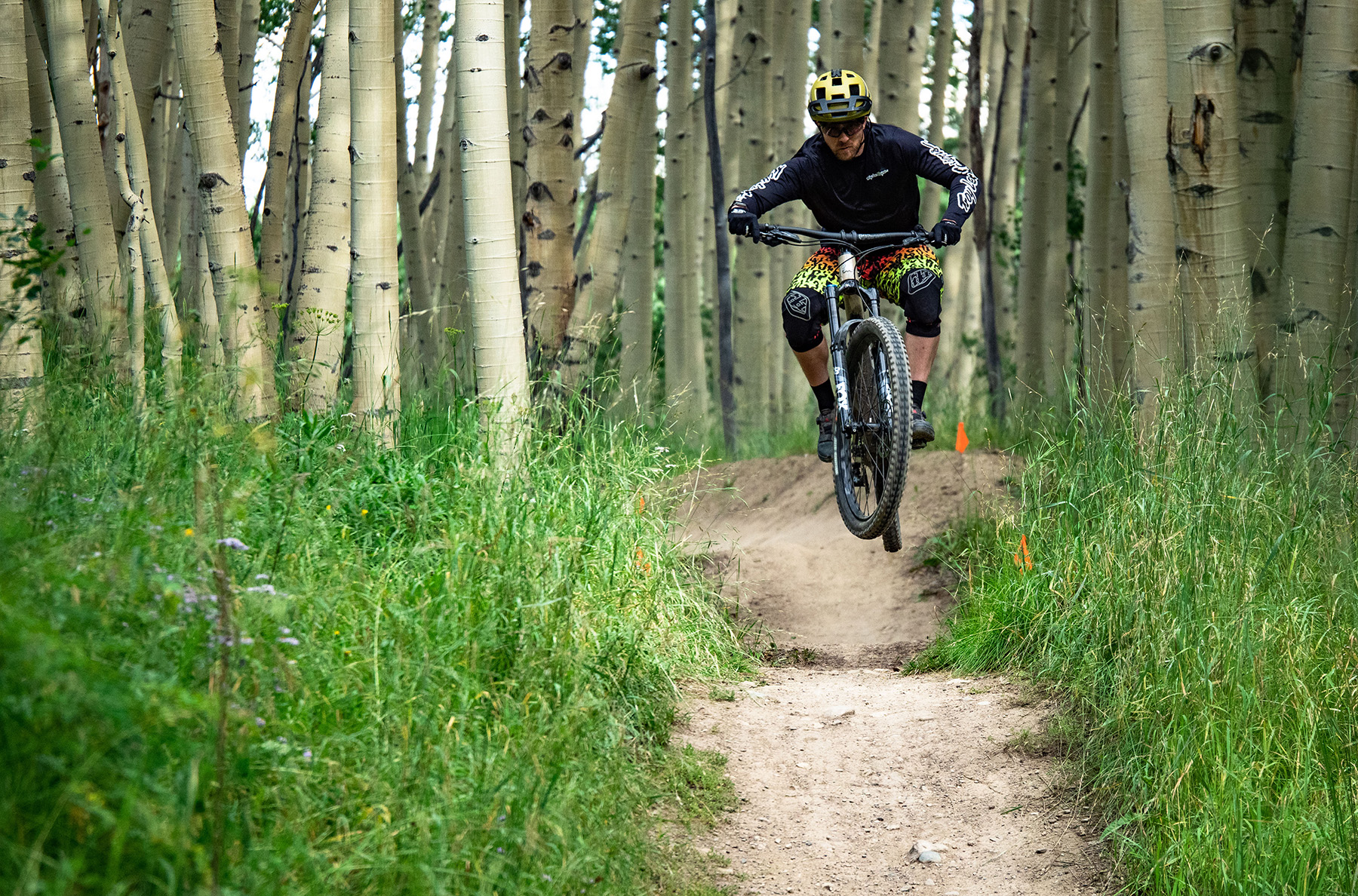
The Build
Dylan: We tested the Tracer 279 in the $5,499 Expert build, the cheapest complete build Intense offers. Overall, I think it provides good value that a lot of riders will be very happy with, but there’s still room to improve.
First, this bike is designed around a coil shock, and it feels like it on trail. The Tracer 279 with the Fox DHX2 Performance Elite coil shock didn’t feel as stiff off the top or through the midstroke as, say, an Enduro bike with a less progressive suspension curve designed to be used mostly with air shocks but that’s being run with a coil on it (the Santa Cruz Megatower comes to mind). I also had a very hard time bottoming out the 500 lb coil that came on our size Large Tracer 279; I’m between the two spring rates for what Intense suggests for my body weight, so I also tried the Tracer with a 450 lb coil. And, well, I liked both, but for different applications. The 450 lb coil gave me about 28% sag, and it offered a more plush, forgiving ride. If this were a Trail bike for me and I was mostly riding moderate to difficult trails, I could be very happy with the more traction-rich and slightly less supportive 450 lb spring. But I did ride a lot of bike park on the Tracer as well as very fast, chunky, natural trails, and for that, I appreciated the extra support throughout the entire 170 mm of rear travel that the 500 lb coil gave me. For a do-it-all Enduro bike, I think Fox’s 475 lb coil would be right on the money for me.
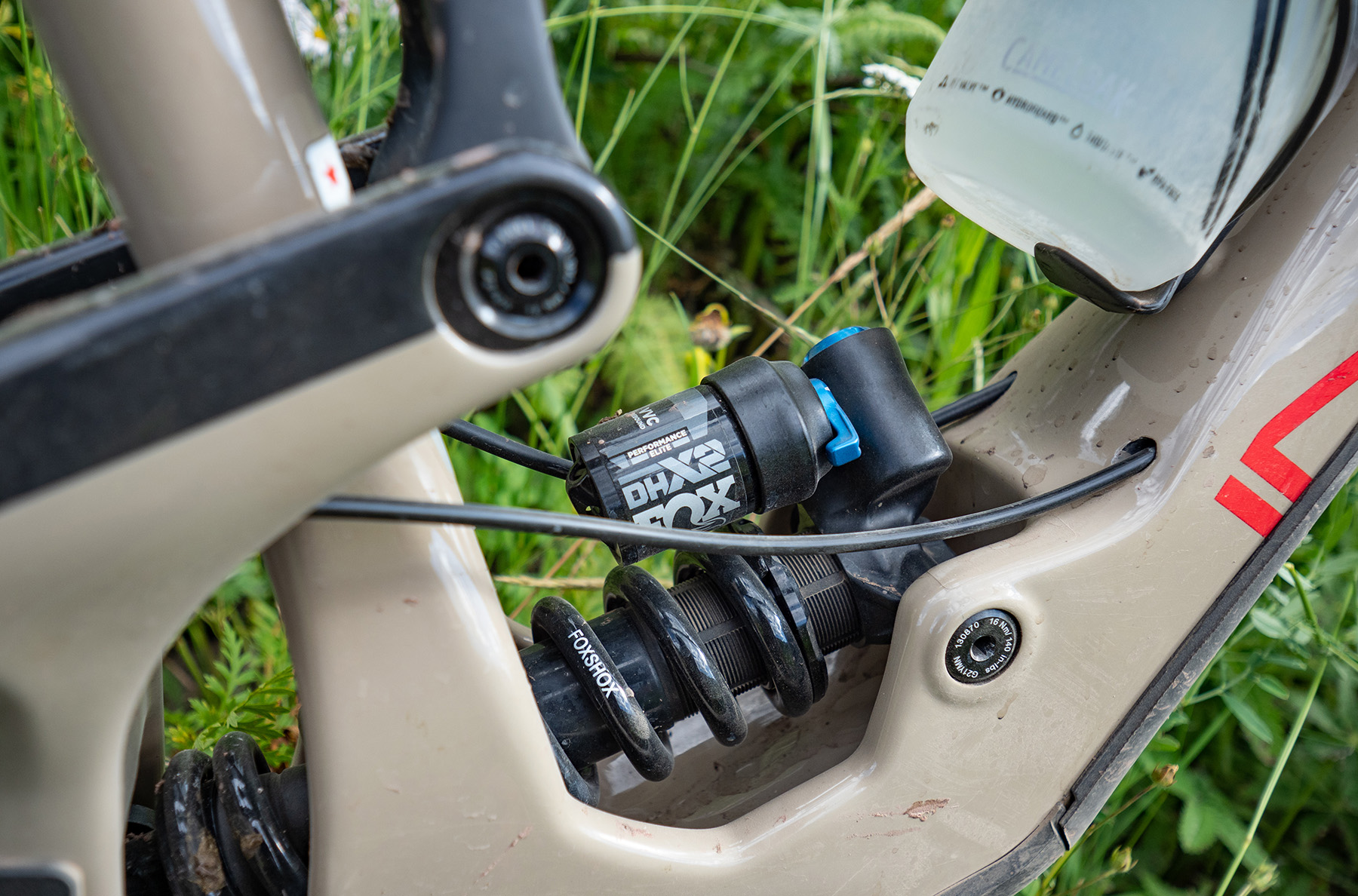
I was a bit less happy with the Fox 38 Performance fork with the Grip damper, but I didn’t hate it. There were several instances where I would have appreciated some more fine-tuning options from the damper, specifically high-speed compression damping, and more range on the low-speed compression. For me, It’s hard to get a fork to feel just how I like by only tweaking the spring rate. That being said, I was totally fine with it 80% or more of the time, and I’m sure a lot of folks could be happy without another 4 fork settings to deal with.
The e*thirteen LG1 Enduro wheelset came with a pretty sizeable ding in the rear wheel from a previous rider. We soon installed Cushcore inserts front and rear on this bike, as I prefer to do with any Enduro bike I ride (we have a lot of sharp rocks in the Gunnison Valley). Still, I was having trouble keeping air in the rear tire, so I just swapped the rear wheel of this bike out with a carbon Revel RW30 wheel with I9 Hydra hubs we had sitting around. Eric can say more about his experience with the stock e*thirteen LG1 Enduro wheelset on this bike, but I found the stock front wheel on the Tracer 279 to work just fine, offering some nice compliance without feeling too mushy and imprecise.
I had zero issues with the Sram NX Eagle drivetrain on this bike, with the one caveat that I was mostly using an XX1 cassette that came on that Revel wheel. Shifting was predictable and crisp, and it maybe taught me that derailleurs and shifters are a good place to save some coin, so long as you have a good cassette. I’m hoping to test more drivetrain combinations to say more about this.
The Sram Code R brakes were fine, though there were some instances where I wished I had a bit more power. I’m glad Intense didn’t put a smaller rotor out back to match the smaller wheel, since I certainly didn’t want less power back there. I’ve come to like a bit less modulation and a sharper lever feel than what the Codes have to offer, but I’m also curious to see what David Golay has to say in his upcoming massive Trail/Enduro Brake roundup.
Eric: *Raises hand, I was the previous rider…*
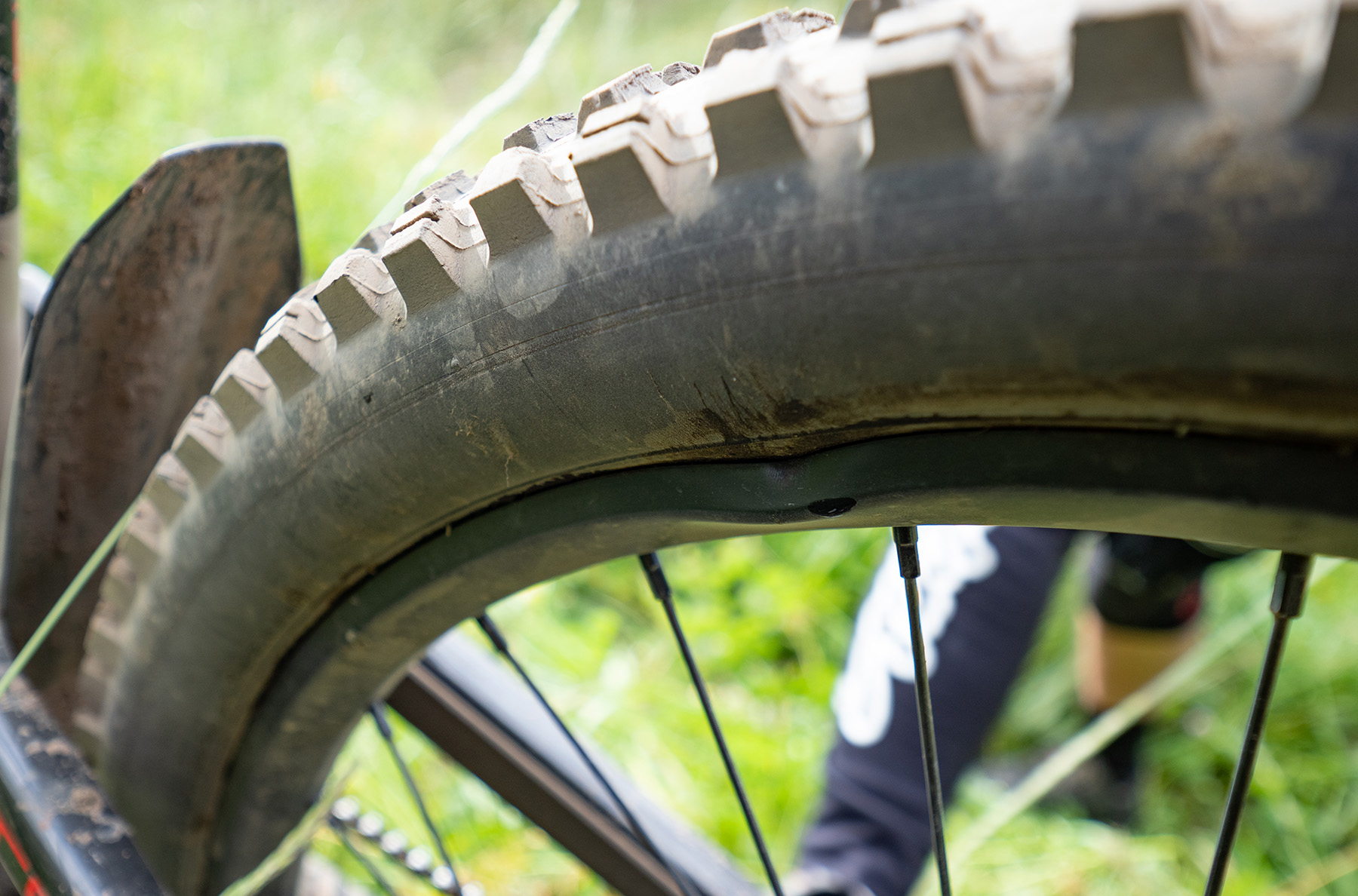
Our Tracer Expert build was an interesting assortment of components but felt like a reasonably strong value for the dollar. Most importantly, the suspension was well-sorted. I do miss the Grip2 damper when using the Performance-level Fox 38 (most specifically high-speed compression adjustment, where the Grip damper can feel like it spikes, at times), but Fox’s Grip damper is still a strong performer. The e*Thirteen components were problem-free, including the wheels (if maybe a bit soft), and the Code brakes are a reliable option for this class. The Intense dropper has been invisible, in a good way.
However, I think that the Tracer 279 is a bike that warrants a heavier tire casing than the stock EXO+. And whenever I eventually wore out the chain and cassette (if I owned the bike), I’d likely upgrade the drivetrain across the board for a bit more precision. But nothing that I couldn’t get used to out of the box, and I think it’ll be even less of an issue if you are on top of keeping your drivetrain clean.
I struggled initially with the NX rear derailleur and talked about it in my Flash Review. I had gotten it dialed, but it just kept feeling worse. I was checking tension, B-limit, etc. but wasn’t very stoked with its shifting performance. Turns out I’m just an idiot and didn’t notice that the derailleur was starting to loosen out of the hanger. After tightening it, it was much better.
Comparisons
Dylan: The Norco Range is another bike that sacrifices versatility and efficiency to provide an extremely capable, traction-rich experience on the descent. That said, the Tracer 279 doesn’t go quite as far as the Range in this regard, and it’s a better climber and a bit more efficient overall, but slightly less capable and forgiving on the way down. Geometry and handling feel very similar, apart from the Range’s high-pivot design, which makes the Range feel even more planted and stable than the Tracer.
Dylan: These two bikes also have a lot in common. Overall, the Megatower is a little bit better of a climber, and slightly more efficient overall, especially when paired with a coil shock. The Tracer 279 is easier to tip into and out of quick, tight, corners, while the Megatower carries its speed ever so slightly better over chattery trails. The Tracer also lets you assume a more casual riding stance on steep trails.

Dylan: The Rail 29 is a more efficient, nimble, and versatile Enduro bike. The Tracer 279 has a bit of an edge over the Rail in terms of how stable and forgiving it is, but the Rail is more pleasant to pedal on long days with lots of vert. For going as fast as possible and taking questionable lines, the Tracer wins, while the Rail feels more at home on a wider variety of trails.
Dylan: This is a very similar story to the Rail above, though I’d say the Spectral is even more efficient and more Trail-oriented than the Rail. Go Tracer for a more capable bike on rough, high-speed descents; go Spectral for a lighter, more do-it-all rig.
Dylan: These bikes sort of remind me of each other. The Lithium feels a bit more efficient overall, though it’s not a huge difference. The Lithium always felt like it wanted you to be forward on the bike, while the Tracer felt like it wanted you to be a bit more rearward. The Tracer was a bit more planted and stable overall, whereas I liked the Lithium a bit more on windy, mellower trails.
Dylan: The Bronson sort of feels like a shorter-travel, more versatile Tracer. If you like the sound of the Tracer but want something more efficient and easier to pedal on big days, the Bronson is a great choice. Alternatively, if you want a longer-travel, more capable Bronson, the Tracer is definitely worth considering.
Dylan: This is another good comparison. These are both very capable, traction-rich Enduro bikes. The Slash is slightly more versatile and efficient, though not by much. I’d also say the Slash is a bit more forgiving and doesn’t need to be pushed as hard as the Tracer to come alive.
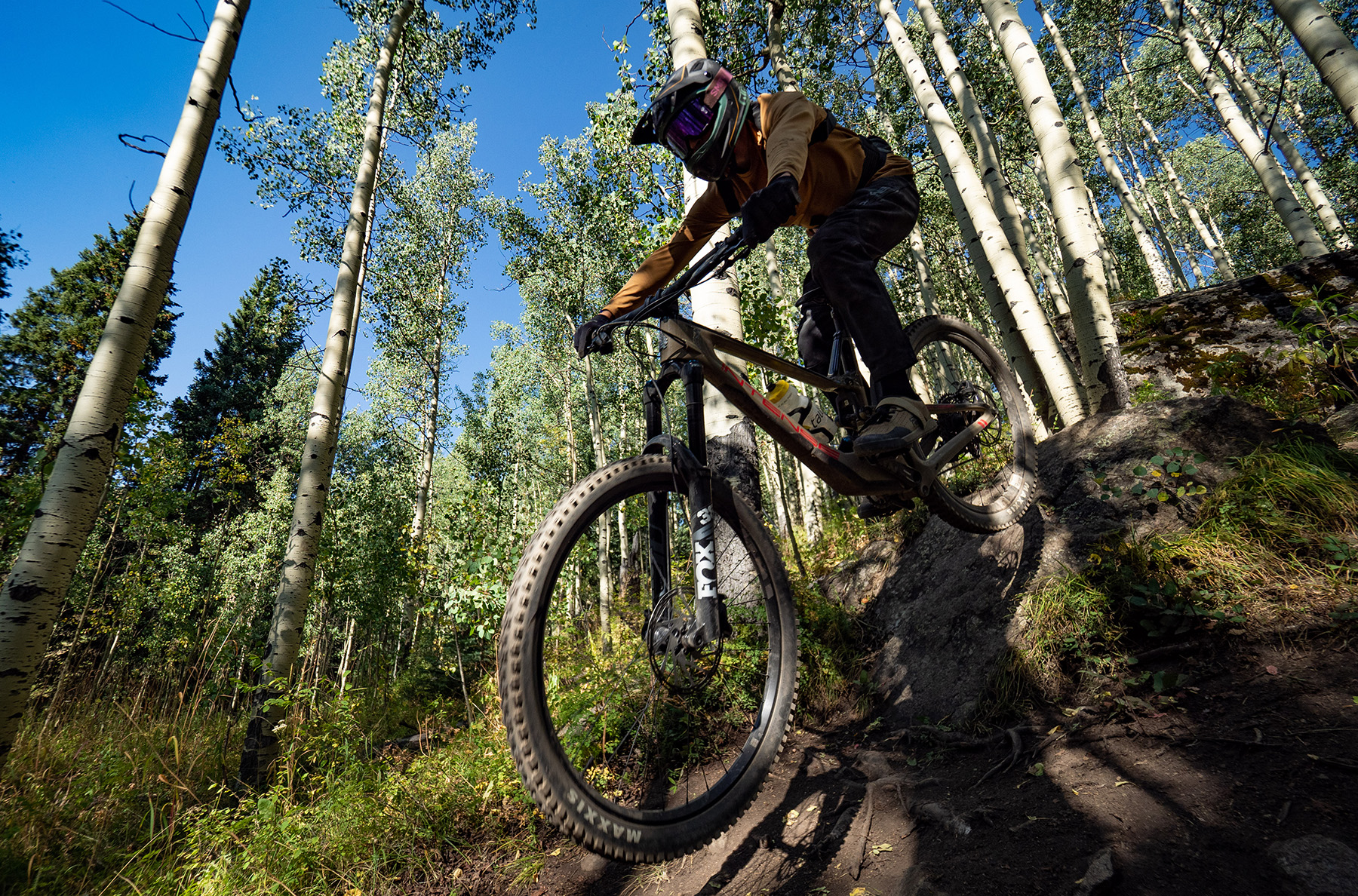
Who’s It For?
Dylan: The Intense Tracer 279 is a capable Enduro bike first and foremost. It is very hard to find the speed limit of this bike, and it allows for some imperfections in line choice, offering a smooth, controlled ride over rough trails. But it also has a slight edge in cornering performance over some full 29” Enduro bikes, particularly when tight, quick changes of direction are necessary, while giving up a tiny bit of rolling efficiency in the process. Sure, it has mixed wheels, but it feels very intuitive and normal, and its mullet configuration isn’t a huge part of its personality. Those who want an Enduro bike to still feel lively and efficient on mellower trails have some better options out there, though the Tracer 279 still isn’t a total slug on the way up and on flatter trails.
Eric: In my mind, the Tracer 279 is for folks who spend 50% of their time in the bike park and 50% pedaling to rougher descents, or those who want an Enduro race rig. It wouldn’t be the bike I’d grab if I prioritized self-powered and high mileage days, frequently rode smooth trails or terrain, or wanted to feel fast on the climbs. But if I cared about traction, increasing my overall average mph speeds on the descent, and frequently rode steep, rough, tight, and/or technical trails, the Tracer would be on my list.
Bottom Line
Dylan: If you prioritize good traction and cornering prowess in your Enduro bike, the Intense Tracer 279 is certainly worth a good look. It isn’t the most efficient nor the absolute most stable Enduro bike, but it should satisfy the needs of just about anybody who likes to ride fast downhill on steep, chunky trails, all without giving too much to complain about on the way up.
Eric: Throughout my time on it, the Tracer 279 carried the poise of a race bike to me. If I had to pick an Enduro bike to ride 40 miles tomorrow, I would look elsewhere. But if I knew I was frequently going to be riding bike park laps, or racing Enduro stages fast and blind, the Tracer would be at the top of my list for its ability to carry speed, ride rough terrain aggressively, maintain traction across a range of speeds or terrain, and keep me a little further away from imminent disaster as I’m looking to straighten out lines between the tape.

You mentioned the Trek Slash, but didn’t really discuss the difference between these two bikes in terms of stability and composure through rough terrain. Any thoughts?